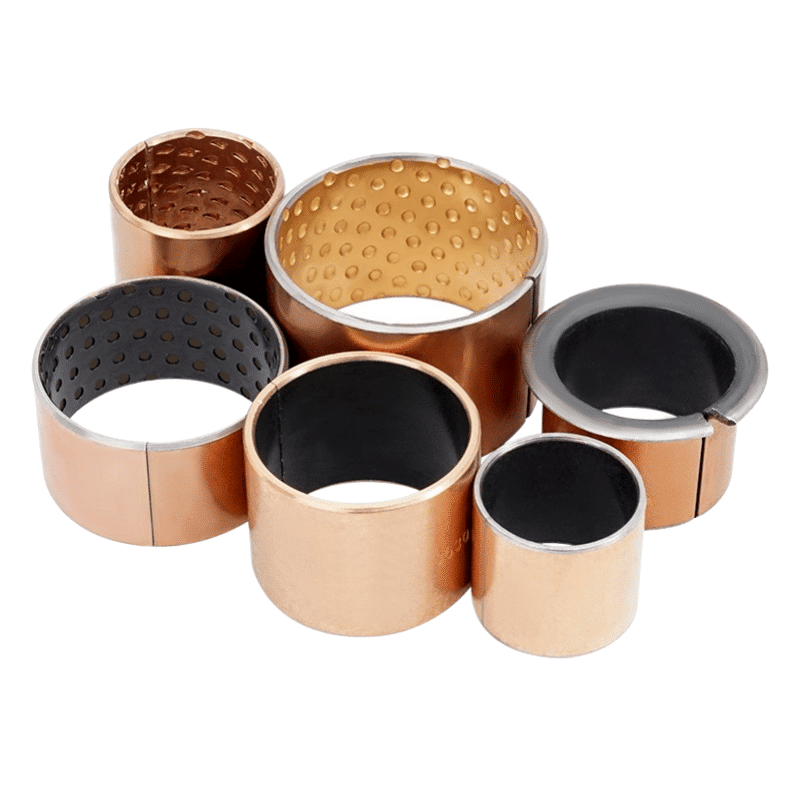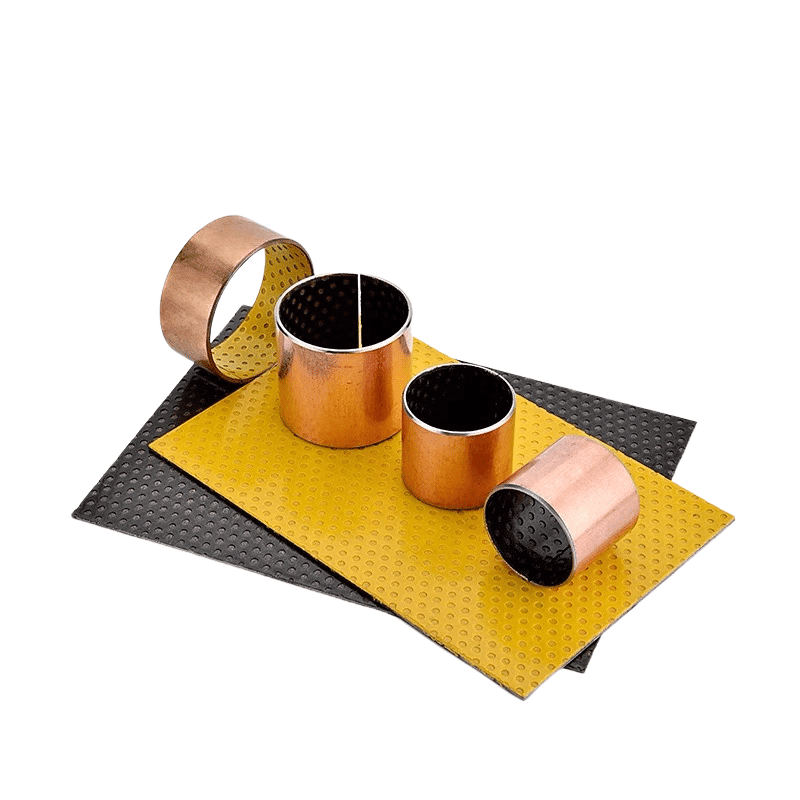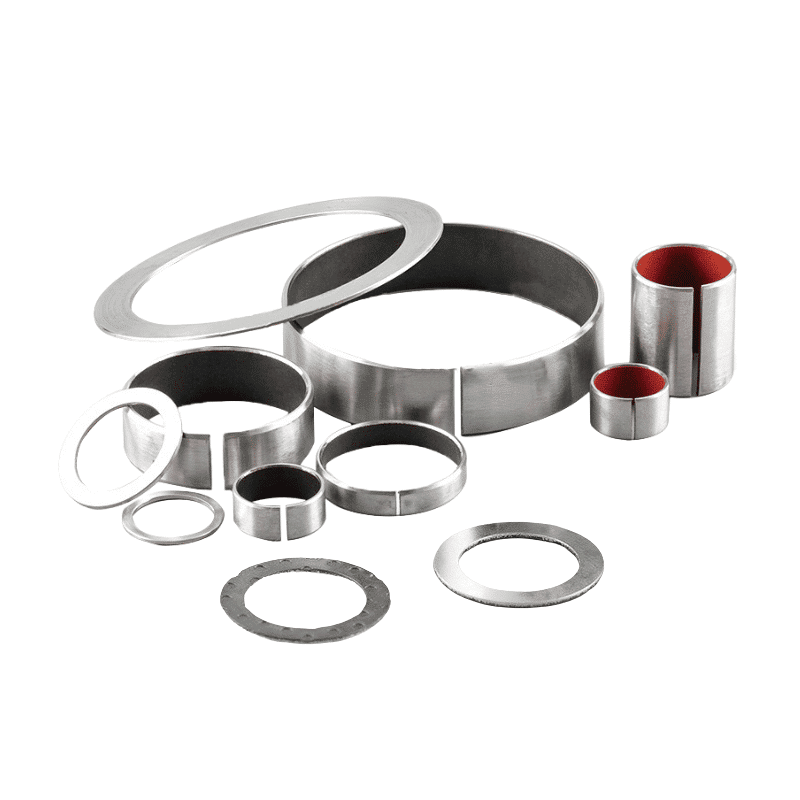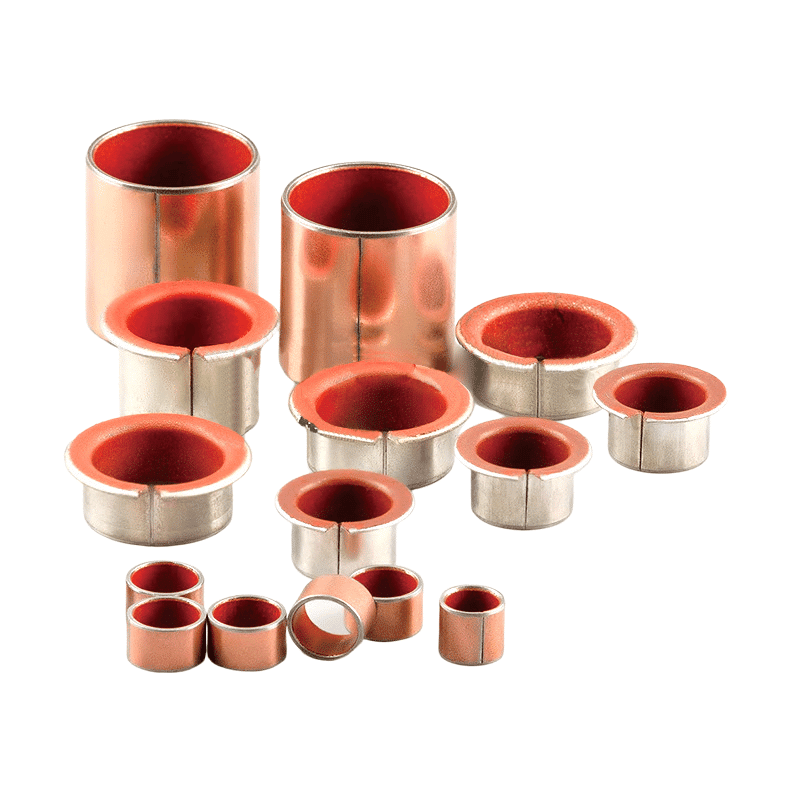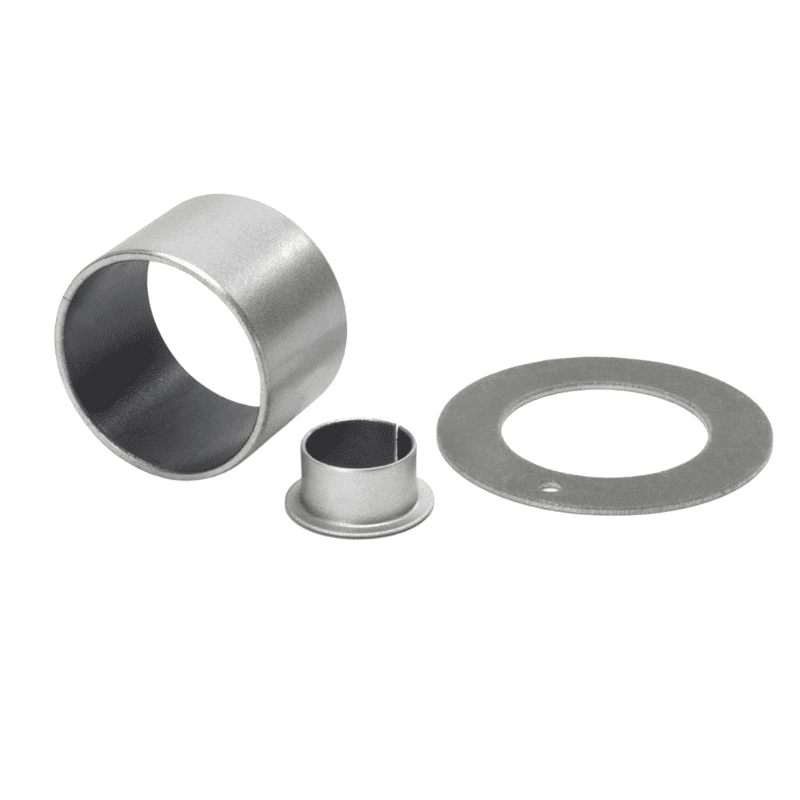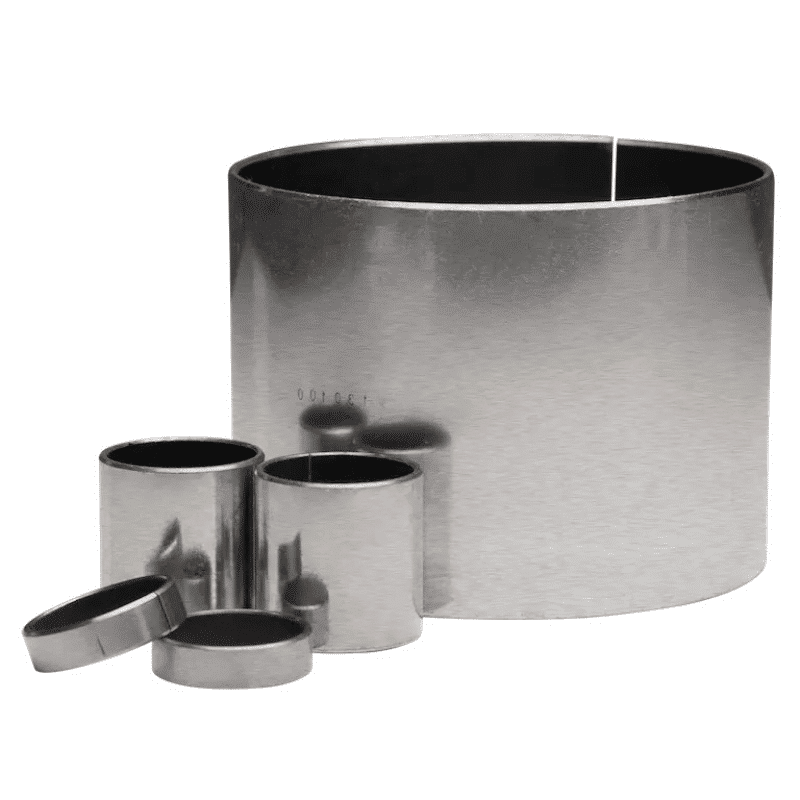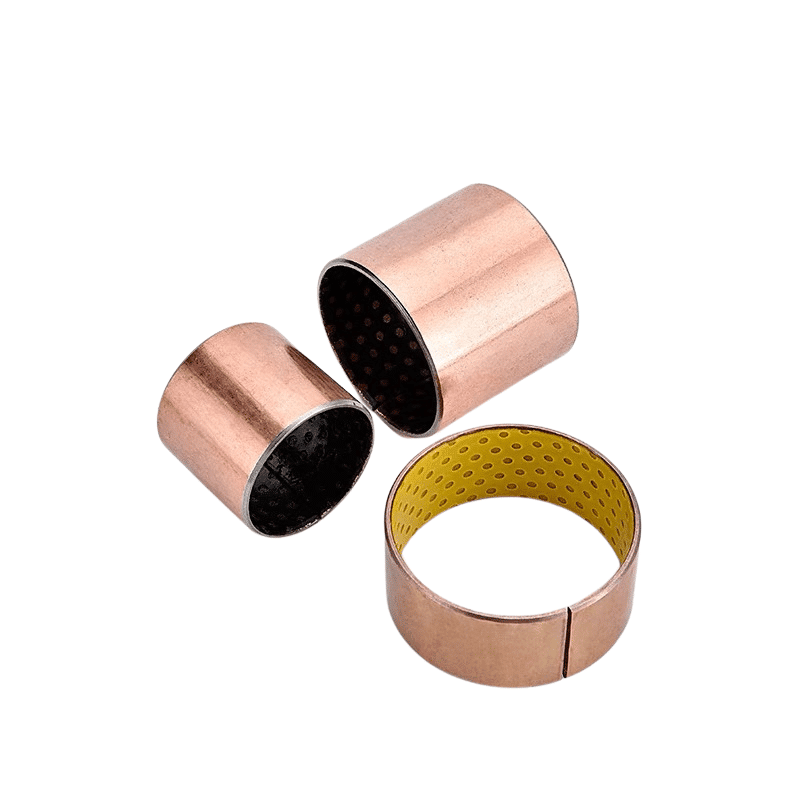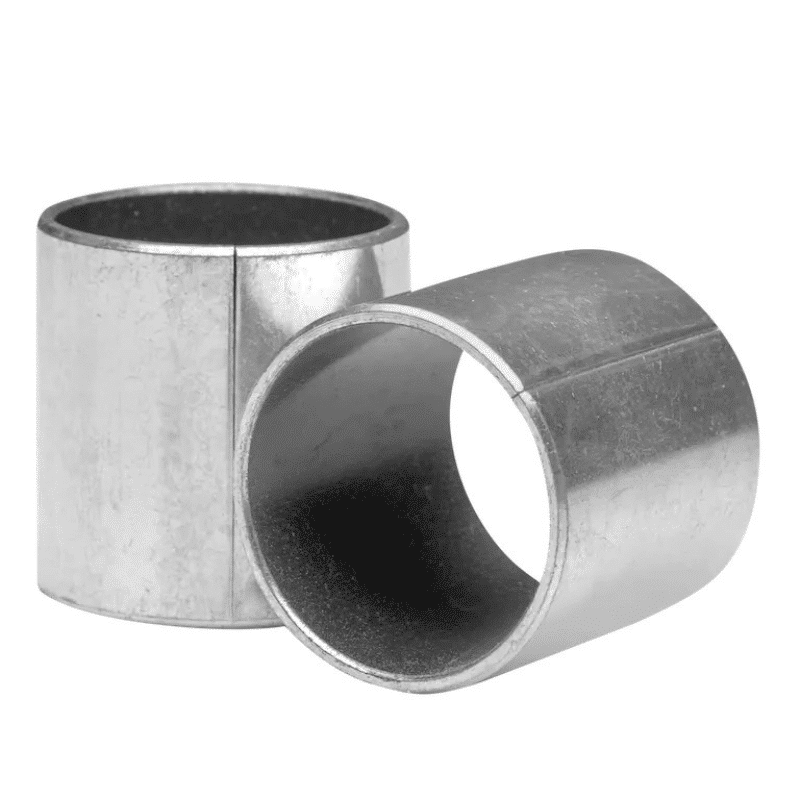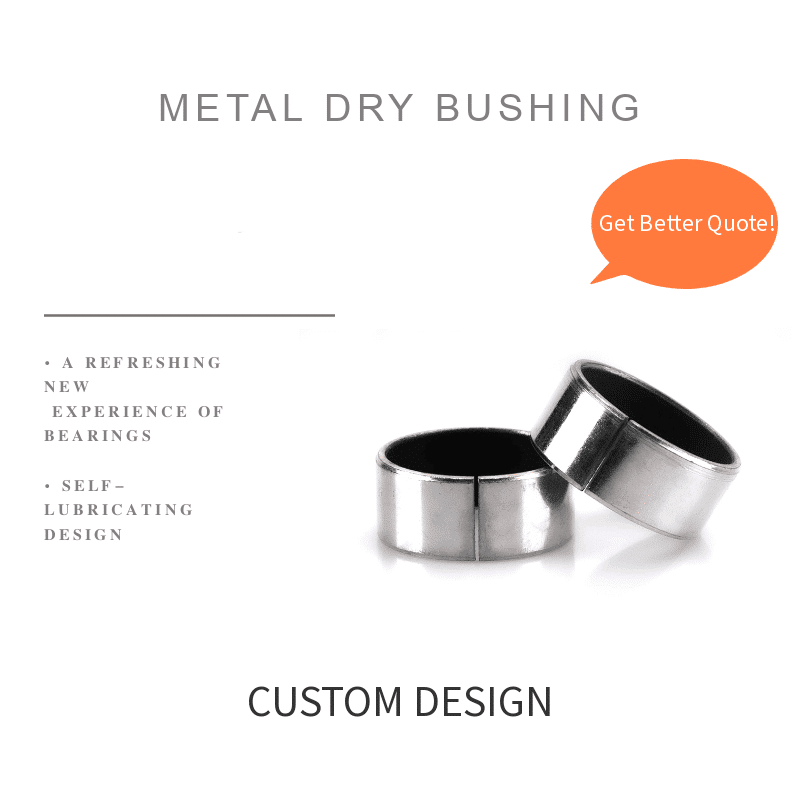Multi-layer Bearings | PTFE & POM Bushes
Bearings and Bushings for the Future: Precision and Customization: Our company, in bearing engineering with decades of experience, designs and develops high-precision self-lubricating bronze bearings & plain bushes. We offer a wide array of sliding bearings tailored to meet specific needs. Renowned for our expertise in custom bronze bushing and slide plate solutions, we provide an expansive selection of bushing metal alloys. Contact us today to benefit from unparalleled services at competitive prices.
Multi-layer Bearings | PTFE & POM Bushes
Plain Bearing Design
Maintenance-free Composite Plain BearingSpecial Designs, Special Materials
There are two standard types of composite material for plain composite bearings: PTFE com- posite and POM composite.
Composite plain bearings bring untold advantages to a wide range of industries and applications, including aerospace, automotive, construction, energy, general industry, entertainment, etc.
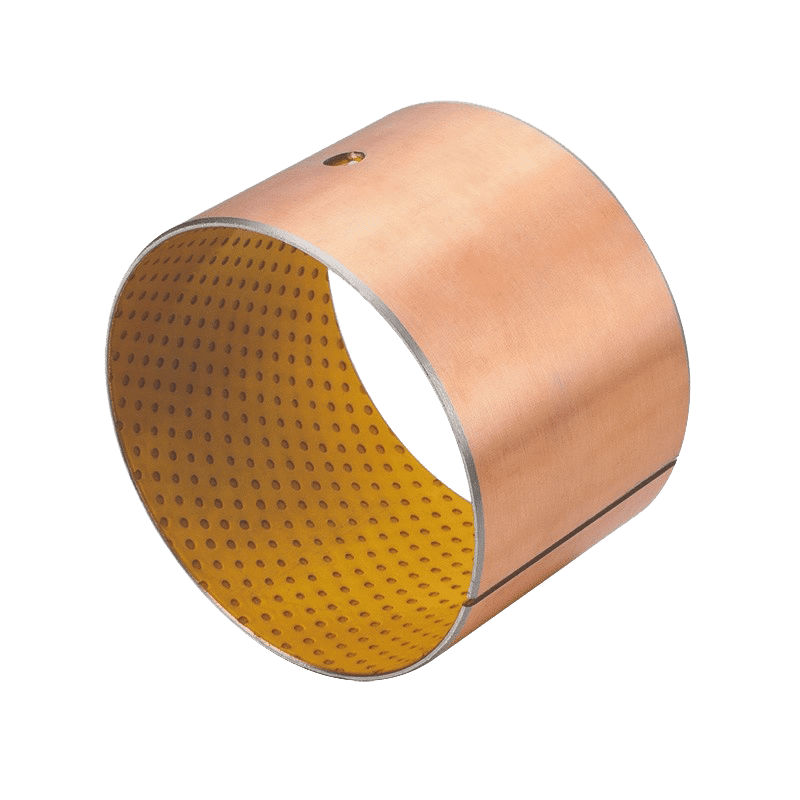
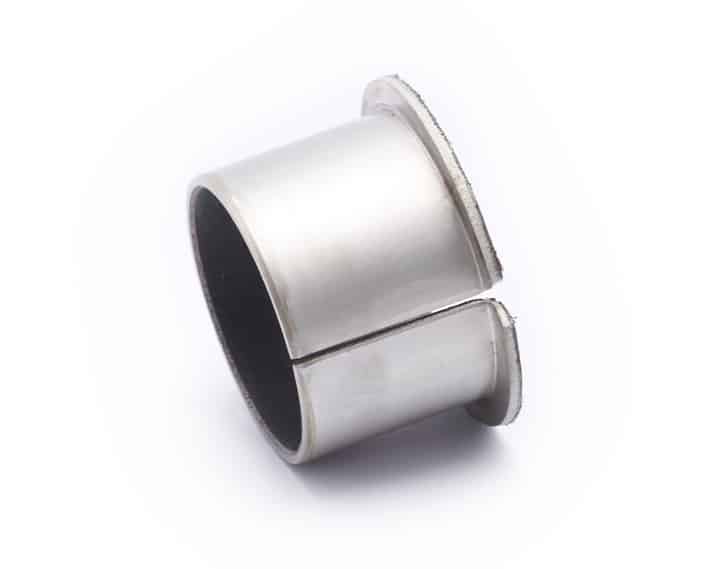

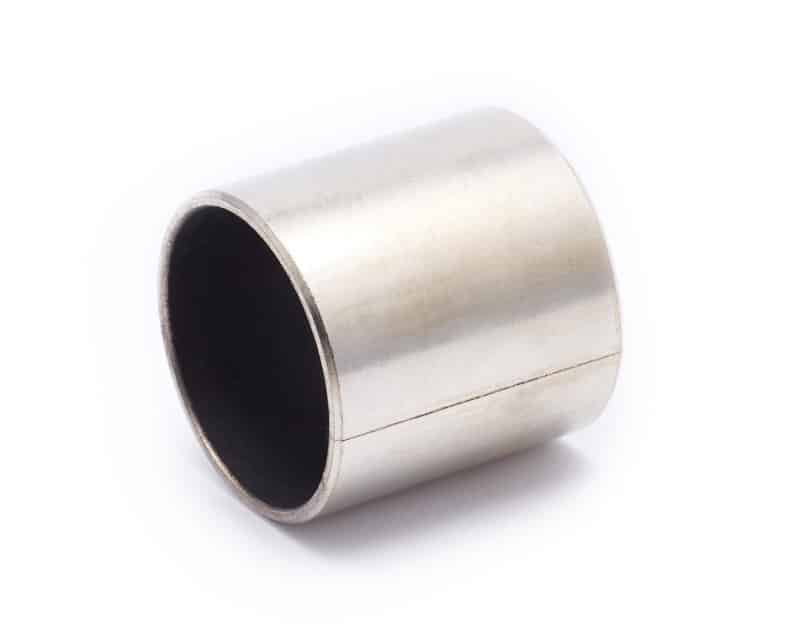
Composite Bearing Project
Selection of composite bearing size
Selecting the appropriate size for a composite plain bearing is crucial for optimal performance and longevity. Plain bearings, also known as sliding bearings or slide bearings, are the simplest form of bearings, consisting of only a bearing surface without any rolling elements. They provide a reliable and cost-effective solution for applications with multi-directional, self-aligning movements.
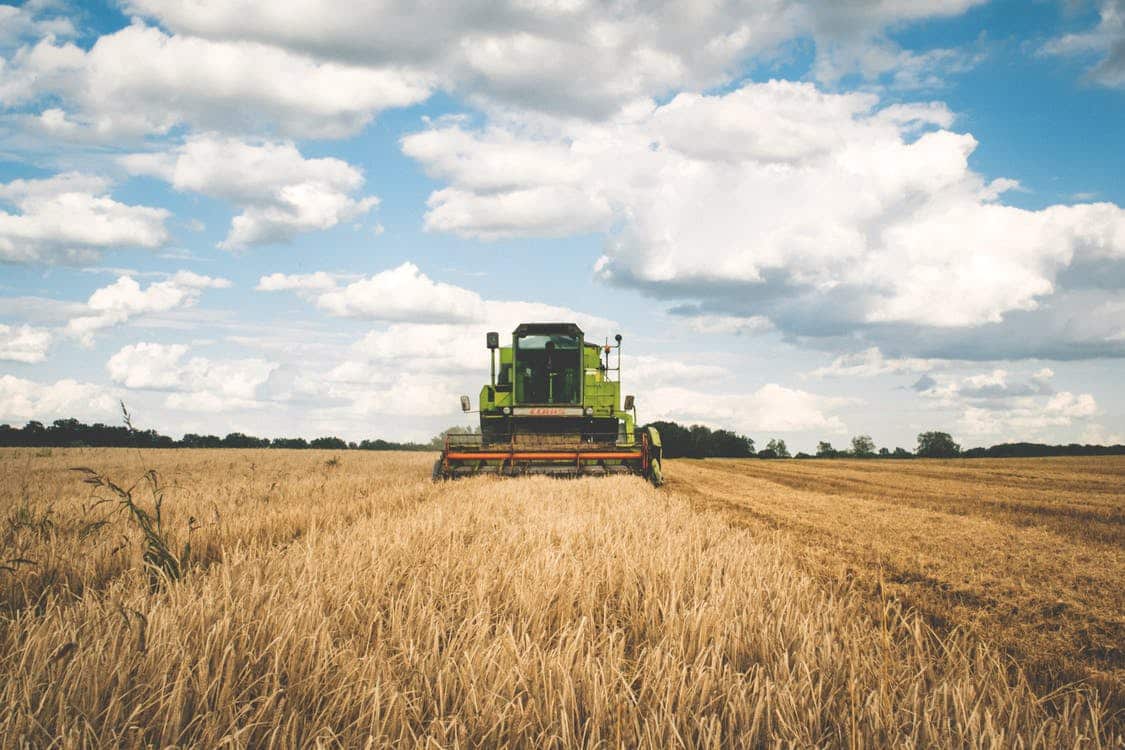
Title: Unlocking Efficiency and Reliability: The Marvels of Composite Plain Bearings with PTFE
In the intricate world of machinery and engineering, where precision meets performance, the quest for efficiency and reliability remains paramount. Among the unsung heroes ensuring smooth operations and longevity are composite plain bearings with PTFE (polytetrafluoroethylene). Let’s embark on a journey to explore the fascinating realm of these bearings and unveil their significance in various industries.
Unveiling the Essence of Composite Plain Bearings with PTFE
Plain bearings, often referred to as bushings or sleeve bearings, are designed to provide rotational and/or linear motion between two components. What sets composite plain bearings with PTFE apart is their unique construction, blending multiple materials to achieve optimal performance.
At the heart of these bearings lies PTFE, a synthetic fluoropolymer renowned for its low friction properties, exceptional chemical resistance, and high temperature tolerance. When combined with a composite material, such as bronze or steel, the result is a versatile bearing solution capable of withstanding demanding operating conditions.
The Versatility in Application
From automotive to aerospace, marine to industrial machinery, composite plain bearings with PTFE find applications across a myriad of industries. Their versatility stems from a combination of factors, including:
- Low Friction: PTFE’s inherent low friction coefficient minimizes wear and tear, reducing maintenance requirements and extending equipment lifespan.
- Chemical Resistance: In environments exposed to corrosive substances or harsh chemicals, PTFE acts as a barrier, safeguarding the integrity of the bearing and ensuring uninterrupted performance.
- High Load Capacity: Composite materials, such as bronze or steel, provide robustness and structural integrity, enabling these bearings to withstand heavy loads without compromising performance.
- Temperature Stability: Whether operating in extreme cold or high temperatures, composite plain bearings with PTFE maintain their functionality, ensuring consistent performance across diverse environments.
Driving Efficiency and Reliability
In today’s competitive landscape, where downtime translates to lost revenue and compromised productivity, the significance of reliable components cannot be overstated. Composite plain bearings with PTFE contribute to operational efficiency and reliability in several ways:
- Reduced Maintenance: With their self-lubricating properties and resistance to wear, these bearings require minimal maintenance, allowing for uninterrupted operations and cost savings in the long run.
- Enhanced Performance: By minimizing friction and heat generation, composite plain bearings with PTFE optimize energy efficiency and contribute to smoother operation, thereby improving overall equipment performance.
- Extended Lifespan: The durability and resilience of these bearings translate to an extended lifespan for machinery and equipment, mitigating the need for frequent replacements and minimizing downtime.
- Customization: Manufacturers can tailor composite plain bearings with PTFE to meet specific application requirements, offering bespoke solutions that align with the unique needs of different industries and operating environments.
Embracing Innovation for a Sustainable Future
As industries evolve and sustainability takes center stage, the demand for eco-friendly and energy-efficient solutions continues to rise. Composite plain bearings with PTFE align with this ethos, offering a greener alternative to traditional bearing materials. With their long-lasting performance and reduced environmental impact, these bearings contribute to a more sustainable and responsible approach to engineering and manufacturing.
Conclusion
In the intricate tapestry of machinery and engineering, composite plain bearings with PTFE emerge as silent champions, driving efficiency, reliability, and sustainability across diverse industries. Their innovative design, coupled with unparalleled performance characteristics, makes them indispensable components in the quest for optimal operational excellence. As we navigate towards a future defined by innovation and sustainability, these bearings stand poised to play a pivotal role in shaping the landscape of modern engineering.
Self-lubricating bearings are essential components in various industries, as they offer low maintenance and high performance. There are three primary types of self-lubricating bearings: multi-layer composite bearings, boundary lubricated bearings, and wrapped bronze bushings. Here is how you can distinguish between these three types of self-lubricating bearings:
- Multi-layer Composite Bearings: These bearings consist of a multi-layered structure, typically with a steel or bronze backing, a porous intermediate layer, and a low-friction sliding layer. The intermediate layer is often made of a porous sintered material, such as bronze, that is impregnated with lubricant. The sliding layer, usually made of a PTFE-based material or other low-friction polymers, provides a smooth surface for the bearing to operate. These bearings are known for their high load-carrying capacity, low wear rate, and long service life.
Key features to identify multi-layer composite bearings:
- Steel or bronze backing layer
- Porous intermediate layer impregnated with lubricant
- Low-friction sliding layer on the bearing surface
- Boundary Lubricated Bearings: Boundary lubricated bearings rely on a thin film of lubricant to separate the bearing surfaces during operation. The lubricant can be a solid or liquid, but it is typically applied only during assembly or maintenance intervals. These bearings may also have surface treatments, such as grooves or cavities, to help retain lubricant and reduce friction. They are typically used in applications where periodic maintenance is acceptable and environmental conditions are not severe.
Key features to identify boundary lubricated bearings:
- Thin film of lubricant between bearing surfaces
- Surface treatments to retain lubricant
- Periodic maintenance required
- Wrapped Bronze Bushings: Wrapped bronze bushings are a type of self-lubricating bearing made of a single piece of bronze that is formed into a cylindrical shape. The bearing surface has pockets or grooves that are filled with solid lubricant, such as graphite or PTFE. As the bearing operates, the solid lubricant is released onto the contact surfaces, reducing friction and wear. These bearings are known for their high load capacity, resistance to corrosion, and adaptability to various temperatures and environmental conditions.
Key features to identify wrapped bronze bushings:
- Single-piece bronze construction
- Pockets or grooves filled with solid lubricant on the bearing surface
- High load capacity and resistance to corrosion
In summary, to distinguish between self-lubricated multi-layer composite bearings, boundary lubricated bearings, and wrapped bronze bushings, look for differences in their structure, lubrication method, and maintenance requirements. Multi-layer composite bearings have a layered structure with a lubricant-impregnated intermediate layer, while boundary lubricated bearings rely on a thin film of lubricant and wrapped bronze bushings are made of a single bronze piece with solid lubricant-filled pockets or grooves.
Multi-layer bearings are versatile and come in various combinations of sliding surfaces. One such combination is a 3-layer bearing, which consists of a copper-plated steel backing, a layer of POM (polyoxymethylene) or PTFE (polytetrafluoroethylene) with additives, and a tin layer. These bearings can be maintenance-free or require lubrication, depending on the application.
POM composite bushings and PTFE composite bushings can be machined to achieve the desired bore size, but they are generally ready for installation upon delivery. These bearings offer a wide range of benefits, such as low friction, wear resistance, and adaptability to different operating conditions.
Polyacetal multi-layer bearings, also known as POM composite plain bearings, have a bronze steel metal backing and are suitable for various lubrication conditions and temperature ranges. These bearings can operate at different temperature ranges, depending on the specific formulation of the POM or PTFE material.
Metal polymer composite bearings are three-layer self-lubricating bearings that can be custom-made to meet specific requirements. They typically have the following structure:
- POM or PTFE with additives as the sliding layer
- Tin or bronze powder as the intermediate layer
- Sheet steel backing with a tin layer for additional corrosion protection
Chinese manufacturers of plain bearings offer a wide range of metal polymer bearings, which incorporate PTFE or POM as the sliding layer. These bearings are known for their excellent anti-friction and anti-wear properties.
Composite bearing structures can be classified into two categories: PTFE/POM-based bearings and thermoplastic bearings. Their operating performance is as follows:
- PTFE/POM-based Self-Lubricating Metal-Polymer Bearings:
- Low friction
- High wear resistance
- Good chemical resistance
- Wide temperature range
- Suitable for dry, marginally lubricated, or fully lubricated conditions
- Thermoplastic Tape-based Metal-Polymer Bearings:
- Excellent wear resistance
- High load-carrying capacity
- Good resistance to chemicals
- Adaptable to various temperature ranges
In summary, multi-layer bearings, particularly PTFE/POM-based and thermoplastic tape-based metal-polymer bearings, offer a versatile solution for various applications. They are known for their low friction, wear resistance, and adaptability to different operating conditions, making them an ideal choice for many industries.
Welcome to Plain Bearing Solutions, your friendly composite plain bearing specialists! As a highly experienced and flexible Chinese manufacturer of composite plain bearings, we provide a wide range of solutions to meet your unique requirements.
Composite dry plain bearings are designed for radial loads and require minimal radial space. These bearings facilitate reciprocating or rotational motion and are ideal for maintenance-free applications or where lubricants may be scarce.
DU and DX composite material bearings have a structure consisting of plastic, bronze, and steel backing. DU bearings are self-lubricating and can operate at temperatures between -200°C and 280°C with stress levels up to 250N/mm² without lubrication. DX bearings are pre-lubricated and can function at temperatures between -40°C and 130°C with stress levels up to 140N/mm² after initial lubrication.
The composite bearing structure includes a bearing housing containing a pre-lubricated DX bushing. Once it has been treated with SB lubricating grease, it can be used for an extended period without needing additional grease.
PTFE composite plain bearings are suitable for oil-free operation and offer several advantages:
- Static friction coefficient close, preventing “crawling” phenomenon
- Wide operating temperature range: -195°C to +270°C
- Good wear resistance, low friction coefficient, and long service life
- Excellent corrosion resistance in various corrosive media (including liquid and gas)
- High mechanical strength, capable of withstanding stable and dynamic loads
- Ability to reduce vibration and noise, improving the working environment
POM composite plain bearings are ideal for room temperature, low-speed, and medium-load applications. They can replace traditional copper sleeves, reducing costs and extending service life. In specific circumstances, they can reduce the frequency of lubrication and simplify replacement procedures, such as in rolling mills. These bearings have been widely utilized in various industries, including automobile chassis, forging machines, gold mining machinery, construction machinery, hydropower, and steel rolling.
To choose the correct composite bearing size, consider the following factors:
- Load capacity: Determine the bearing’s load capacity based on the application’s requirements. Take into account static, dynamic, and shock loads, as well as any potential load variations during operation.
- Shaft diameter: Measure the shaft diameter for which the bearing will be used, ensuring that the bearing’s inner diameter corresponds to the shaft size. It is essential to maintain proper clearance between the shaft and the bearing to avoid excessive friction or premature wear.
- Bearing length: Consider the bearing length based on the required support for the shaft and the nature of the applied load. Longer bearings may provide better load distribution, but they can also increase the risk of edge loading and misalignment.
- Operating temperature: Evaluate the operating temperature range of the application and choose a bearing material that can withstand the expected temperature fluctuations without compromising performance or service life.
- Lubrication: Assess the lubrication requirements of the application. Some composite bearings are self-lubricating, while others may require periodic lubrication. Ensure that the chosen bearing is compatible with the lubrication method and frequency.
- Environmental factors: Take into account any environmental factors, such as exposure to moisture, dust, or corrosive chemicals, which may affect the bearing’s performance or lifespan. Select a bearing material that offers the necessary corrosion resistance or protection for the specific environment.
- Installation: Consider the ease of installation and maintenance for the chosen bearing size. Make sure that the bearing can be easily installed and replaced when necessary, and that it is compatible with the available installation tools and techniques.
By carefully considering these factors, you can select the appropriate composite bearing size for your application, ensuring reliable performance, reduced maintenance, and a longer service life.

Solutions For Every Industry
Searching for Dependable Bushing Solutions? viiplus Has What You Need.

Design Guides, Materials
Bushing design, Comprehensive design manuals covering a range of self-lubricating materials used in all of viiplus’s manufacturing processes.

Technical Guides
Manufacturing On Demand, Technical Guides For Machining Design. Discover the latest in metal alloys, materials, and design tips for manufacturing custom machined and self-lubricating bearing parts.

Get Instant Quote
To receive your instant quote, simply upload your drawing file and choose your production process & bushing material.

Prototyping, Place Order
After you place your order, we will start the production process. You will receive updates when your order has completed production and is ready to be dispatched.

Receive Your custom Parts
We provide precision-inspected high-quality parts, packing lists and documents, and delivery tracking.


